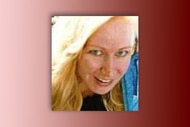Create a free profile to get unlimited access to exclusive videos, breaking news, sweepstakes, and more!
It May Take Months To Test The New Bone Fragments Found Near Maura Murray's 2004 Crash Site, Sister Reveals
The potential new evidence in the Maura Murray case was discovered just a little more than 20 miles away from where the college student crashed her car into a tree, then vanished, on Feb. 9, 2004.

It may take months for bone fragments that were discovered in the same area in New Hampshire where Maura Murray vanished in 2004 to be tested, her sister said this week.
Julie Murray wrote in a blog post on Tuesday that she recently asked officials for an update and an estimated timeline for results on the bone fragments that were found at New Hampshire’s Loon Mountain in mid-September.
“They told me it may take several months for examination and testing results,” she wrote. “In speaking with one expert familiar with the initial assessment, there may be evidence to suggest the gender of the remains, which gives us hope; however, we want to see definitive results which hopefully will come soon.”
In an email sent on Friday to Oxygen.com, she added that officials did not provide specifics on the type of tests they are conducting on the bone fragments or who has been working on examining them.
The potential new evidence in the Maura Murray case was discovered just a little more than 20 miles away from where the 21-year-old crashed her car into a tree on Feb. 9, 2004; she had left her dorm at the University of Massachusetts, Amherst for a reason that is still unknown. A few witnesses called the police immediately following the collision, but by the time authorities arrived on the scene, Murray was gone.
The mysterious case has been the theme of at least one book and several podcasts, including "Missing Maura Murray," as well as "The Disappearance of Maura Murray,” a docuseries that aired on Oxygen in 2017.
In her post, Julie Murray wrote that several people have asked her if she believes that the delay in the results of the testing has anything to do with the "new state-of-the-art chairlift” coming soon to Loon Mountain.
"While I do not know if or how this grand opening may be delaying the results of the bone fragment testing, I couldn’t help but notice that the public has received more updates on the chairlift than my family has received about my missing sister,” she noted and referred to regular progress updates that have been posted online regarding the chairlift. The Loon Mountain website refers to the project as “North America’s most technologically advanced chairlift.”
UMass Amherst bioarchaeology graduate instructor Priscilla Mollard told Western Mass News this week that identification of remains in this type of case typically begins with the creation of a biological profile. She noted that pelvis fragments and skull fragments could help provide the most reliable form of identification. Mollard isn’t involved in the Murray case.
Julie Murray previously told WATD that the remains include a human skull. In her email on Friday to Oxygen.com, she shared details of her family's state as they wait for news.
"My family and I are holding up as best as can be expected, considering what is at stake," she wrote. "We are thankful for the love and support of family, friends and supporters as we continue to wait for results. We are sensitive to the fact that these remains belong to someone, if not Maura, and we are hoping the identification brings peace to the family, if not our own."


























